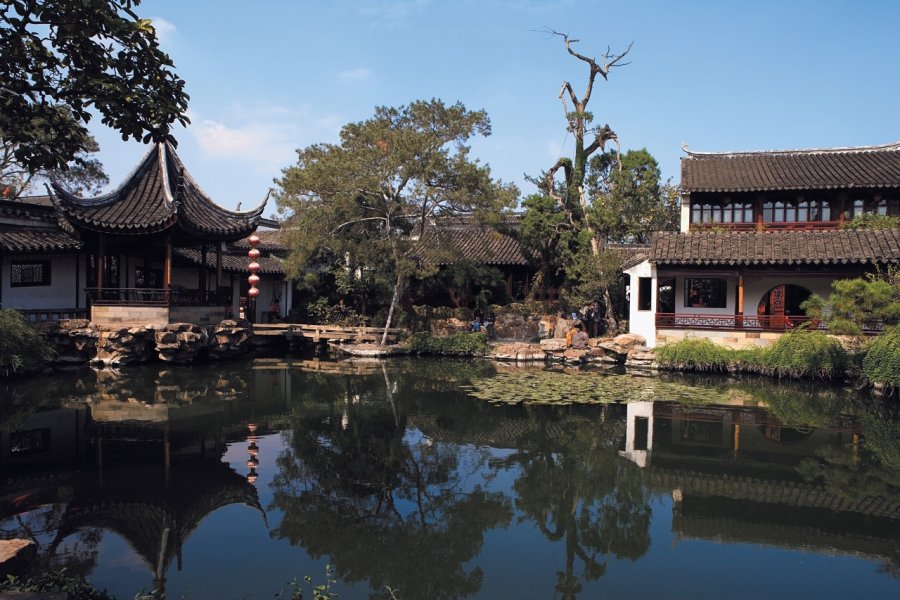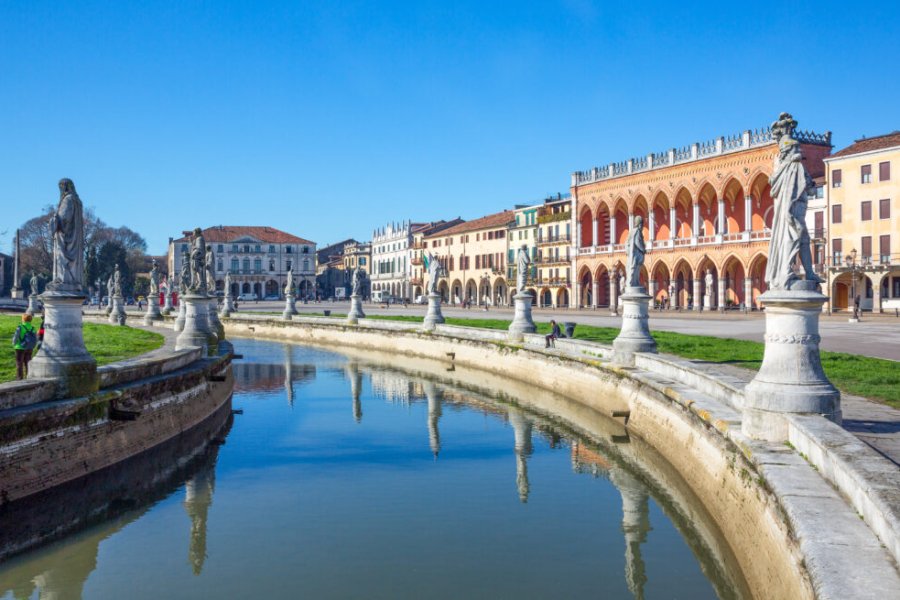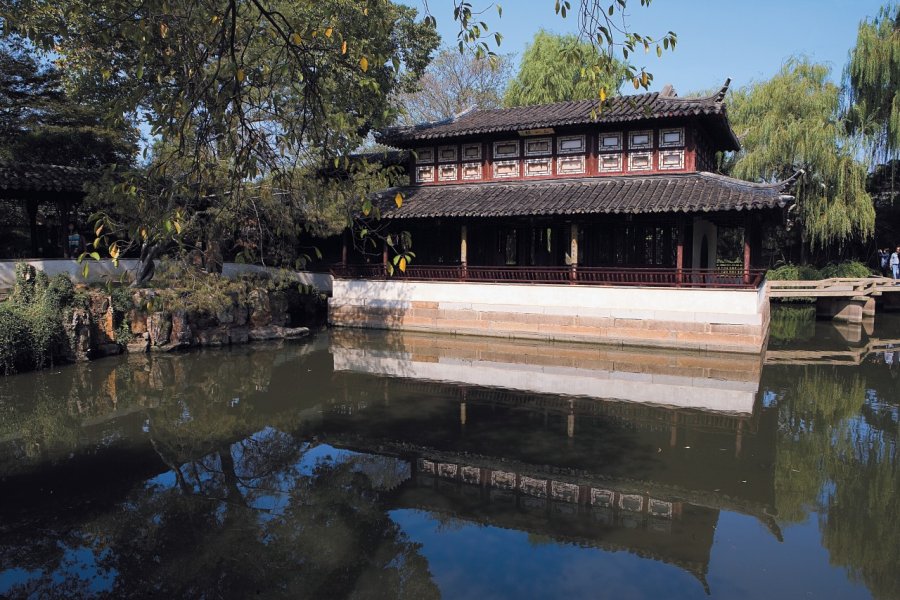Travel Guide Suzhou 苏州
Find an accommodation
Advertising
Located a hundred kilometers west of Shanghai, in the heart of the rich Yangtse Delta lands, Suzhou has a long history.HistoryIn 514 BC, his founder, King He Lu, instructs his Minister Wu Zixu to build one of the largest and most beautiful cities in China. Gusu (Suzhou) became the capital of the Kingdom of Wu, one of the major states of East China during the Spring and Automnes period (770-476 BC). The construction of the Grand Canal in 610 connecting Beijing to Hangzhou via Suzhou favors the economic and cultural development of the city. Indeed, it becomes an essential step for merchant ships and constitutes a peaceful retreat for the famous poets or the men of letters.Under the North Song (907-1279) Emperor Zhao Ji (1082-1135) carries through the canal myriad trees, flowers and rocels from Taihu Lake to develop its imperial garden. It thus conveys the image of extreme wealth of the cities of Suzhou and Hangzhou.A saying of the time designates them as «two prosperous cities in every sense of the word, true celestial palaces on earth». Zhao Ji's work follows that of Qiao Lao (the king of Yue) who, as early as 922, works to modernize the city. Suzhou is therefore a wonderful example of the urbanization of the Song. The urban area is organized into a fabulous network of canals and streets cutting at right angles. An artificial regulatory system mastered the river Yangtse floods, combining the aquatic world with the urban world.It was under the Ming dynasty (1368-1644), and especially in the fifteenth century, that Suzhou became the largest silk producer in the Empire. As China has lost control of the Silk Road, it is turning to shipping routes to export its products to the West.Also, at the same time, the city knew its quintessence in the art of gardens (developed from the tenth century), and built sumptuous master houses for the elite. Shops and shops abound on the banks of the canals. The local artistic and literary style gives birth to a specific form of opera, the Kunque (大╩), at slow pace, and at a painting school, the Wuhua (大╩). The city is renowned for its extreme sophistication, favoring the feminine character of things in opposition to the masculine, characterized by vigor and robustness. We appreciate pure and clear poems, a soft and mellow local dialect, the gay style and calligraphy, finally the elegance and delicacy of painting. Marco Polo immortalized him during his visit in 1276. In his narratives, he evokes a «Venice of the Orient», thus designating the city of water to the countless bridges that still exist today over 160 examples of the 35 kilometers of canals. At the time, the channels, essential commercial channels, allow goods to be transported.In the nineteenth century Suzhou, besieged during the Taiping revolt, is then open to international trade. Occupied by Japanese troops in 1937, the city is one of the last bastions of Guomindang. In 1949, it was seen in the eyes of the new communist power as the headquarters of an «outing» imperialism. Over the years, however, the city remains the country's largest silk production center and is a team of chemical (fertilizer) and rice paper.TodayNamed Economic Development Zone in the 1980 s, Suzhou then got a key position in the country's new political and economic development. It also enjoys the proximity of Shanghai and the dynamism of its port in Zhangjiagang.Today, the historic city is surrounded by the city of tomorrow. The Suzhou-Singapore industrial zone attracts the old town, leading it into a future of 5-star hotels, fast food and fast tracks… Don't forget your pleasure! The city center is very easily walking and strolling along the canals is a treat.
What to visit Suzhou 苏州?
Advertising
Weather at the moment
Advertising
Organize your trip with our partners Suzhou 苏州
Transportation
Book your plane tickets
Car Rental
Boat rental
Accommodation & stays
Find a hotel
Holiday rental
Find your campsite
Tailor-made trip
Immersion travel
Services / On site
Activities & visits
Find a doctor















